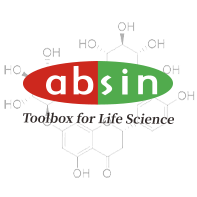Product Details
Product Details
Product Specification
| Usage |
Specimen Requirements 1. Specimens should be extracted as soon as possible after collection, following the relevant literature. Experiments should be performed as soon as possible after extraction. If experiments cannot be performed immediately, specimens can be stored at -20°C, but repeated freeze-thaw cycles should be avoided. Procedure 1. Dilution of Standard: This kit provides one standard sample at full strength. Users can dilute the sample in a small test tube according to the following chart. 10μg/L |
Standard No. 5 |
Add 150μl of the original standard to 150μl of the standard diluent |
||||||||||||||||||||||||||||||||||
5μg/L |
Standard No. 4 |
Add 150μl of the original standard to 150μl of the standard diluent |
|||||||||||||||||||||||||||||||||||
Standard No. 3 |
Add 150μl of Standard No. 4 to 150μl of Standard Diluent |
||||||||||||||||||||||||||||||||||||
1.25μg/L |
Standard No. 2 |
Add 150μl of Standard No. 3 to 150μl of Standard Diluent |
|||||||||||||||||||||||||||||||||||
|
3. Incubation: Seal the plate with a sealing film and incubate at 37°C for 30 minutes. 4. Prepare the solution: Dilute the 30x concentrated wash solution 30x with distilled water and set aside. 5. Wash: Carefully remove the sealing film, discard the liquid, spin dry, fill each well with wash solution, let it sit for 30 seconds, then discard. Repeat this process 5 times and pat dry. 6. Add enzyme: Add 50 μl of enzyme-labeled reagent to each well, excluding the blank well. 7. Incubation: Perform the same procedure as in step 3. 8. Wash: Perform the same procedure as in step 5. 9. Color Development: Add 50 μl of Color Developing Reagent A to each well, followed by 50 μl of Color Developing Reagent B. Gently shake to mix thoroughly. Incubate at 37°C in the dark for 10 minutes. 10. Stop: Add 50 μl of Stop Solution to each well to terminate the reaction (the blue color will immediately turn yellow). 11. Measurement: Use the blank well as a zero value and measure the absorbance (OD) of each well at 450 nm. Measurements should be performed within 15 minutes after adding the Stop Solution. Calculation Draw a standard curve on graph paper with the concentration of the standard as the horizontal axis and the OD value as the vertical axis. Find the corresponding concentration of the sample from the standard curve based on the OD value of the sample; then multiply it by the dilution factor. Alternatively, use the concentration of the standard and the OD value to calculate the linear regression equation of the standard curve, substitute the OD value of the sample into the equation to calculate the sample concentration, and then multiply it by the dilution factor to obtain the actual concentration of the sample.
| |||||||||||||||||||||||||||||||||||||
| Species Reactivity | Mouse | ||||||||||||||||||||||||||||||||||||
| Theory | This kit uses a double-antibody sandwich assay to measure mouse type III collagen propeptide (Pro-C3) levels in samples. A microplate is coated with purified mouse type III collagen propeptide (Pro-C3) antibody to create a solid-phase antibody. Type III collagen propeptide (Pro-C3) is then added sequentially to the antibody-coated microwells. This antibody then binds to HRP-labeled type III collagen propeptide (Pro-C3) antibody, forming an antibody-antigen-enzyme-labeled antibody complex. After thorough washing, the assay is developed with the substrate TMB. TMB converts to blue under the catalysis of HRP and to yellow under the action of acid. The intensity of the color is positively correlated with the amount of type III collagen propeptide (Pro-C3) in the sample. The absorbance (OD) is measured at 450 nm using a microplate reader, and the concentration of mouse type III collagen propeptide (Pro-C3) in the sample is calculated using a standard curve. | ||||||||||||||||||||||||||||||||||||
| Detection Type | Used to determine the content of type III collagen propeptide (Pro-C3) in mouse serum, plasma and related liquid samples. | ||||||||||||||||||||||||||||||||||||
| Composition |
|
||||||||||||||||||||||||||||||||||||
| General Notes | 1. After removing the kit from the refrigerator, allow it to equilibrate at room temperature for 1 hour before use. If the enzyme-coated plate is opened and not completely used, store it in a sealed bag. 2. Crystals may form in the concentrated wash buffer. Warming in a water bath can aid dissolution during dilution. This will not affect the results. 3. Use a pipette for each sample addition step and frequently calibrate its accuracy to avoid experimental error. The time for each addition should ideally be within 5 minutes. For large numbers of samples, using a dispenser is recommended. 4. Develop a standard curve with each measurement, preferably with replicates. If the analyte content in the sample is too high (the sample OD value is greater than the OD value of the first standard well), dilute the sample a certain number of times (n times) with sample diluent before measurement. When calculating the final dilution, multiply by the total dilution factor (×n×5). 5. The sealing film is for single use only to avoid cross contamination. 6. Please store the substrate in a dark place. 7. Strictly follow the instructions for operation. The test results must be determined based on the readings of the microplate reader. 8. All samples, washing solutions and various wastes should be treated as infectious materials. 9. Components of different batches of this reagent must not be mixed. |
||||||||||||||||||||||||||||||||||||
| Storage Temp. | Unopened test kit, stored at 2-8°C, has a shelf life of 6 months. | ||||||||||||||||||||||||||||||||||||
| Test Range | 0.3μg/L-12μg/L |



 Standard Curve
Standard Curve